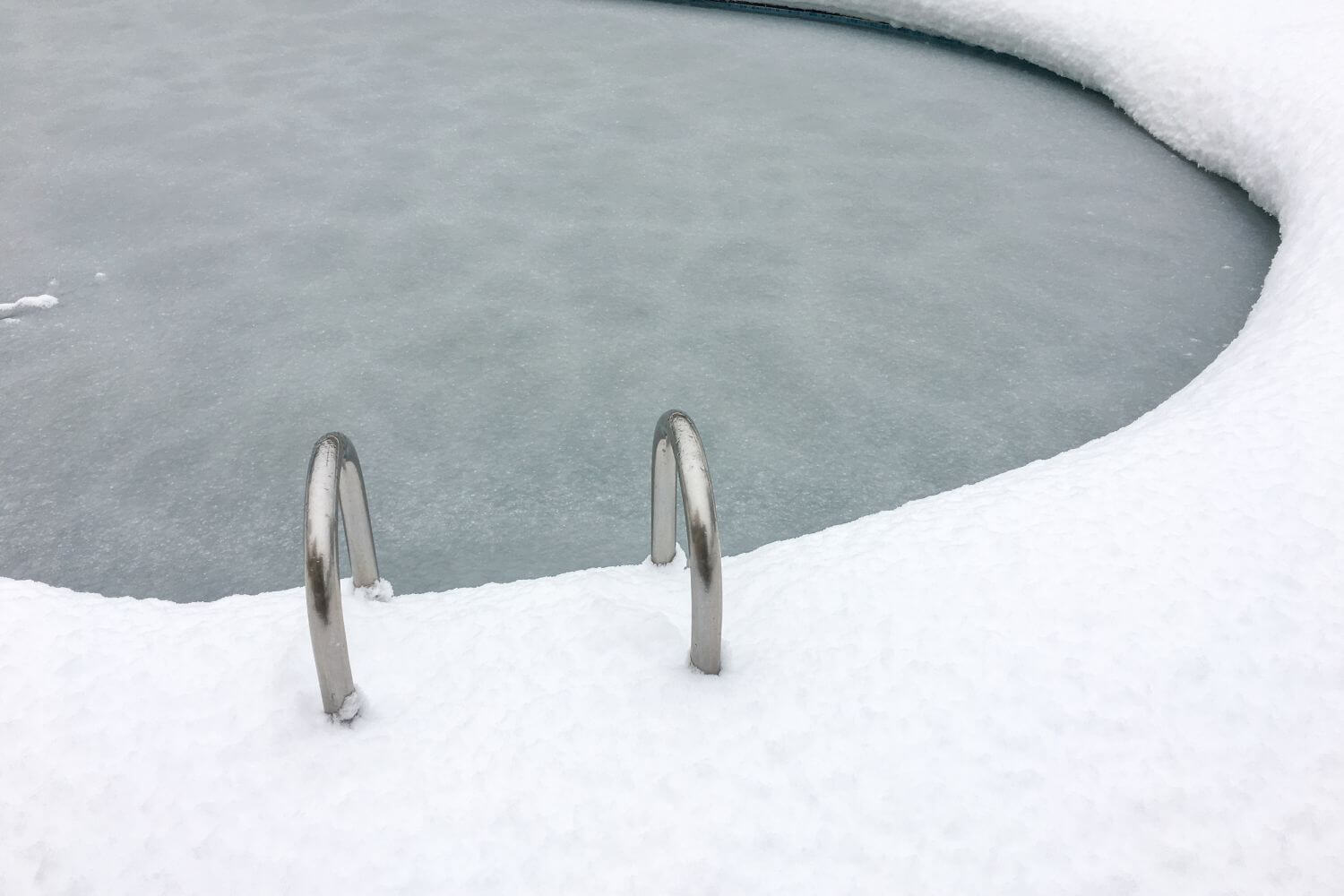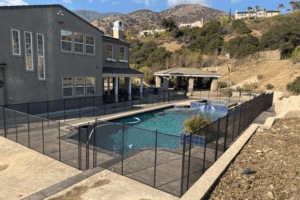
10 Questions to Ask Before Buying a Pool Safety Fence
Don’t buy a pool safety fence without asking these essential questions. This buyer’s guide helps you evaluate height, compliance, materials, installation, and more.

Swimming pool safety barriers help keep your pool protected, even when swimming pool freeze protection is in place to keep it safe throughout the winter. Far more than just installing a winter swimming pool cover, this includes preparing the body of the pool, the water inside it, and any fixtures, features, or amenities for falling temperatures. Let’s take a look at how to winterize your pool to reduce the risk of both accidental drowning and freeze-related drownings during the coldest months of the year.
There are many different ways in which freezing temperatures can impact your swimming pool and it’s surrounding area. Being aware of these possibilities will help you to better prepare your backyard for winter.
Ice forming on the surface of your pool can easily cut into or damage the pool itself. Breaking up ice creates jagged splinters floating in your pool, while leaving it to form increases the pressure around the edge of the flow as the ice expands. Even when emptied, freezing temperatures can cause plaster, liners, and grout to become brittle.
When water freezes into ice, it expands, increasing the pressure against the interior of pipes until they begin to crack and burst.
Just as with pipes, the housings for water can be shattered by the pressure of expanding ice, and more delicate components can be crushed or warped as ice forms around them.
Accidental immersion can quickly become a death sentence in freezing weather as hypothermia rapidly sets in or the victim becomes trapped under a sheet of ice.

Whether or not you need to fully winterize your pool depends largely on the climate in your area, the severity of winter you’re expecting, how often you may use the pool through the winter months, and whether the cost of increased heating and circulation outweighs the increased cost of chemicals used for winterization.
Whichever choice you make, it’s important that you plan now to protect your pool and anyone who may be around it before the first freeze hits.
If you’re going to run your pool over the winter months, your swimming pool freeze protection will revolve around making it harder for ice to form in your pool.
During the coldest months, your pump should be running twelve hours a day in intervals that make it harder for ice to form and coalesce. In addition, you need to ensure the full volume of your pool is being circulated to avoid cold pockets forming.
It takes a lot of energy to heat a large volume of water, so the last thing you want to do is get behind the curve. Your pool heater should be running anytime the temperature dips below 35 degrees Fahrenheit, but if temperatures are expected to fall sharply, a large amount of sleet or snow is expected, or the winds are howling in from the North, you may want to engage your pool heater even earlier to ensure your pool’s water stays well above freezing.
With the more rigorous intermittent circulation schedule and the need to be proactive with your temperature control, consider adding automation systems like timers, sensors, and connected control systems to your swimming pool. These can not only take some of the workload off your shoulders but also avoid a potential tragedy from getting off work late, misreading the weather report, or simply forgetting to manage your pool in the holiday hustle and bustle.
When you close your pool, it needs to be winterized to remove water from areas that can be damaged by expanding ice, create more room for potential expansion to eliminate the threat of building pressure, and add insulation and chemical mitigation to prevent the remaining water from freezing at all. We’ve talked before about the proper way to close your pool for the winter, but here’s a quick refresher:
Lowering your pool level gets the water below some of the more at-risk parts of your pool’s interior surface and reduces the chance of water re-entering your pipes or accessories. Then, you’ll drain all water from the pipes, filter, pump housing, and heater.
Along with a measure of your usual pool chemicals that keep the water clean and safe, you’ll add extra sanitizer, pool antifreeze, and conditioners to reduce the risk that the still water will stain your pool or liner over the winter.

A winter swimming pool cover helps insulate the pool from the frigid air and any slushy precipitation. It also serves as a safety cover that blocks access to the pool surface. Anchored around the edge of the pool, it’s strong enough to hold the weight of a full-grown adult, making it a great deterrent to accidental immersion.
Whether you close your pool or leave it open, you need to ensure safety barriers are in place to help prevent accidental drownings. Thousands of lives are lost annually, and a lack of sufficient barriers is a contributing factor in the majority of these tragedies.
Your local safety professional is ready to help you create a safer swimming pool with ASTM-compliant parts and professional installation. Schedule your free estimate and they’ll talk to you about your pool needs, take measurements, and lay out your options to protect your friends, family, and pets. Get your free quote from your local All-Safe Pool installer today.

Don’t buy a pool safety fence without asking these essential questions. This buyer’s guide helps you evaluate height, compliance, materials, installation, and more.

Understand how local pool fence codes work and what to check before installation. This beginner’s guide simplifies requirements so your safety barrier complies and protects effectively.

Learn the truth behind common pool safety myths and make better decisions to protect your family with fact‑based guidance on fences, barriers, and maintenance.
Enter your zip code to locate an independent installer in your area
Enter your zip code to locate an independent installer in your area

Due to the many variations in monitors, phones, and browsers, color samples and product examples may appear different on different screens. Computers and mobile devices are not all calibrated equally and color reproduction on the Internet is not precise. The same is true for printed items such as brochures and other sales literature.
In addition, the colors of our products photograph differently under different lighting conditions. For example, photos taken in full sunlight will vary from photos taken on a cloudy or overcast day. Similarly, shadows from nearby objects can affect the color and transparency of our products. If a precise color or specific shade is important, please inspect the actual color of your product prior to installation.
Many of our products’ materials are not available through typical stores and vendors and therefore must be custom manufactured specifically for our use. In order to control costs and provide you with the best value possible, our raw materials are produced in large batches and can often take several months to receive. The colors of our materials can, and often do, vary slightly from batch to batch. Although we make every effort to minimize color variations, we cannot be responsible for these differences when they occur. If a precise color or specific shade is important, please inspect the actual color of your product prior to installation.
For example, we use the name “putty” to describe some of our products. Your idea of the color “putty” may be different than someone else’s idea of “putty”. In addition, products may have the same color name but may not be the exact same color. For example, we have different shades of “black”. Please do not order using color names as your only guide. If a precise color or specific shade is important, please inspect the actual color of your product prior to installation.
If it is important that your product be an exact color or shade, it is highly recommended that you inspect the actual product prior to its installation and address any concerns with your local independent installer. Most independent installers do not offer refunds or accept returns due to color variations.